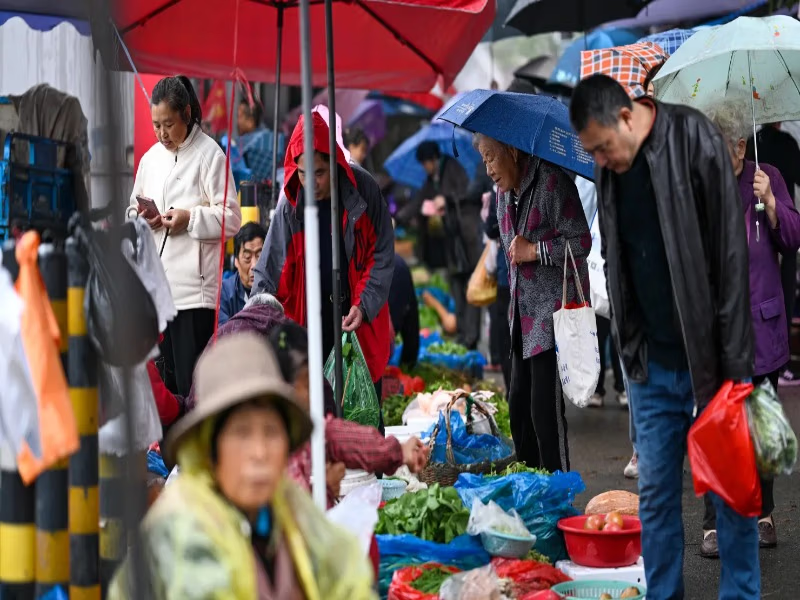Deflationary pressures in China improved in October as consumer prices resumed growth after being in negative territory for most of the year, backed by the holiday season and the fall in wholesale prices, which also remained subdued.
The statistics released by the National Bureau of Statistics of China on Sunday indicated that the consumer price index for October stood at 0.2 percent, compared with the zero growth analysts had anticipated, or flat year-on-year growth.
The reading in October was the best this year and the first kind of positive growth in consumer prices since June.
CPI also increased by 0.2 percent on a month-on-month basis, in comparison to the expectation of analysts that it would increase by zero.
Meanwhile, the food prices, which have dragged the CPI in the country, declined by 2.9 percent year-on-year basis, but the prices increased by 0.2 percent in the last month.
Reuters poll reported that the deflation at the factory-gate softened, as prices declined 2.1 percent year-on-year, in comparison with a 2.2 percent drop, and completed three years of continuous negative growth. Producer prices increased by 0.1 percent in October on a month-on-month basis.
In a statement, Chief Statistician of the Urban Department at the National Bureau of Statistics (NBS), Dong Lijuan, said, “In October, policies aimed at expanding domestic demand continued to take effect, coupled with the boost from the National Day and Mid-Autumn Festival holidays.”
Although the efforts by China to curb price wars and stimulate demand appear to have begun, with industrial profits in the country surging over 21 percent in September, analysts lament that the reliance of local governments of China on tax revenue promotes ongoing production that would enhance competition and overcapacity until significant tax changes are executed.
According to an official survey released on October 30, stated that the manufacturing activity in China in October fell more than anticipated, and this was the lowest in six months.
The sub-indices of production, new orders, raw material inventory, and employment resorted to further narrowing, indicating a sharp decline in the manufacturing pace and weakened demand.
The producers in China have been facing uncertainty of demand due to the trade tensions with the U.S. this year and a lack of consumer confidence at home as Beijing attempted to deal with a long-term housing decline and export headwinds.
Customs data reported on Thursday that the exports of the country were surprisingly falling, and the shipments to the U.S. recorded double-digit declines in the seventh month, decreasing by 25 percent.
In the future, the impact of export headwinds may diminish as U.S. President Donald Trump and his Chinese counterpart, Xi Jinping, reached a trade truce during a meeting in South Korea on October 30, alleviating a potentially explosive situation that had been a source of concern about a full-fledged trade war.
The leadership of China has promised to increase domestic consumption last month when it unveiled the economic roadmap for the next five years.
China must “vigorously boost consumption,” the meeting readout stated, which has been translated by CNBC.
The leaders further explained the necessity of boosting consumption by urging to counterbalance with “effective investment” and “adhere to the strategic point of expanding domestic demand.”






